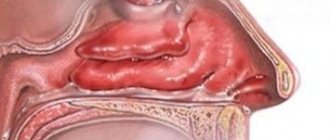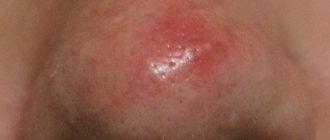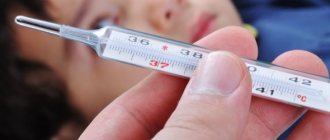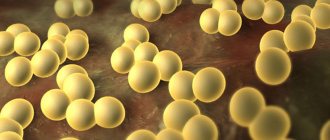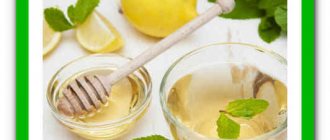Nasal sores are a generalized concept of pathological formations, damage in the nasal passages or at their beginning. The nasal cavity is a barrier zone where microbes are neutralized under the influence of the protective forces of the mucous membrane.
If a person has a weakened immune system, then under the influence of any pathogenic microorganisms a sore may appear in the nose, which often does not go away for a long time, and the question naturally arises: “What to do with these sores and how to treat them?”
Suspicious patients even call banal crusts that appear as a result of low air humidity in the room a sore in the nose, and so-called optimists, who are inappropriately concerned about their health, do not pay attention, for example, even to a boil in the nasal passages.
Of course, only a doctor can make a final diagnosis. The sore is sometimes localized under the nose, and most likely it will be a herpetic rash that affects not only the mucous membranes, but also the skin.
Pimples, boils, scratches, polyps, neoplasms, ulcers - all this is popularly called “vacuum”. These diseases undoubtedly have their own cause, from elementary mechanical damage to manifestations of dangerous diseases.
It is impossible to find such a term as “sore” in a patient’s chart; any disease in the nasal cavity will have a clear medical term. Let's try to figure out all the "wrinkles" in the nose from the side of medical knowledge.
Causes of sores in the nose and their manifestations
We will not consider all possible pathologies, but will focus on the most common reasons that cause changes in the nasal mucosa.
Herpes virus
When herpes is activated, blisters with serous contents appear on the skin and mucous membranes. First there is itching, and then pain. Next, the bubbles open, ulcers, erosions and crusts form. When a large area of the mucous membrane in the nose is affected, breathing worsens.
Allergic reactions
Allergies are often the starting point for infection.
Flowering plants, strong odors from household chemicals, and cosmetics affect the nasal mucosa and thin it. A person constantly scratches and picks his nose, thereby infecting the inflamed mucous membrane. Dry sores form in the affected areas, and sometimes small polyps are found in the nose. Patients complain of itching, burning, liquid discharge, and other unpleasant symptoms that cause irritability. The symptoms are so intrusive that sometimes it seems that the allergy will become the patient’s eternal companion.
Nasal polyps
Polyps are usually a consequence of long-term allergic and inflammatory diseases of the nose. Large polyps are visible even to the patient. They are dangerous because they are completely capable of blocking breathing through the nasal passage.
At an appointment with an otolaryngologist, the patient notes that the sore in the nose does not go away for a long time. Detailed article about the treatment of nasal polyps.
Effective treatment of polyps
Tumors in the nose
The danger of neoplasms, especially malignant ones, is that they easily disguise themselves as harmless sores on the nasal mucosa. Sometimes they pretend to be bleeding ulcers, warts, or papillomas. The growth of all neoplasms should necessarily alert the patient.
Neoplasms are often painless, which does not force the patient to consult a doctor in time. The final answer about the benignity or malignancy of a tumor is given by histological examination of a sample of the neoplasm.
Erysipelas of the nasal cavity
This condition occurs against the background of immunodeficiency. It's all due to raging streptococcus. This is a serious disease that begins on the skin and often spreads to the mucous membranes.
Erysipelas is accompanied by high body temperature, enlarged lymph nodes, pain at the site of the lesion, and general intoxication of the body.
Furunculosis of the nasal cavity
This is an infectious process that occurs against the background of a decrease in the body's defenses.
The pathogenic microorganism causes inflammation of the hair follicle and an abscess (furuncle) develops. The inflammatory process also affects nearby tissues. Such a sore in the nose often occurs in a child with low immunity and gastrointestinal diseases. In most cases, furunculosis is generalized, i.e. spreads throughout the body.
The disease occurs with elevated body temperature, the inflamed skin is sharply painful. After a couple of days, an abscess forms, which, after ripening, opens and a dense rod emerges from the cavity. Sometimes the disease is accompanied by enlarged lymph nodes. Purulent sores in the nose are dangerous due to the possibility of infection spreading into the paranasal sinuses.
Rhinophyma
The disease is a benign hypertrophic change in any part of the nose. Over time, the nose becomes disfigured and increases in volume. The functioning of the sebaceous glands is disrupted, fat accumulates and decomposes in them, resulting in a foul odor. Rhinophyma is considered mainly a complication of rosacea (rosacea).
Older male patients are more likely to suffer
Ozena (runny nose with stench)
Bloody sores in the nose can accompany ozena. The disease is still not fully understood and there is debate about its origin. Against the background of atrophy of the nasal mucosa, thick discharge is formed, which shrinks into crusts and can bleed. The pathological process occurs with a terrible smell.
Nasal diphtheria
Nowadays, the disease is rare and occurs against the background of diphtheria of the pharynx. Upon examination, white deposits may be detected in the nostril. The wings of the nose are eroded. Small erosions turn into crusts.
Eczema at the entrance to the nasal passages
This form of eczema occurs against the background of general eczema, when there are multiple lesions in other areas, or as a separate disease in chronic sinusitis, as well as rhinitis of various etiologies.
The skin is constantly exposed to irritation and damage, and with a weakened immune system, this is an impetus for the development of eczema.
The rashes are very itchy, the patient complains of the constant appearance of sores, there is discharge of a different nature in the nose, which flows down and irritates the eczema even more. On examination, redness, blisters and ulcers are visible. A crust forms on top (this is already the second stage of the disease). In addition to general complaints, sores near the nose cause aesthetic discomfort. Usually the pathological process spreads to other areas of the face.
Sycosis of the nostrils
Sycosis often occurs simultaneously with eczema, and it is sometimes difficult to accurately diagnose. The disease is triggered by an infection, most often streptococcus. The hair follicles become inflamed, pus appears, and nearby tissues become swollen. Upon examination, small ulcers and crusts are visible.
A characteristic feature of sycosis is protruding hairs from the center of the pustules; they are easily removed by pulling them out.
Chancre (symptom of syphilis)
This formation does not hurt, it is dense in consistency. Erosion is localized in the center of the formation. The diagnosis of syphilis is confirmed by performing a serological blood test (Wassermann reaction).
An experienced doctor (dermatovenereologist), often without analysis, is able to accurately determine the cause of such a sore in the nose and prescribe targeted treatment.
Problems caused by serious illnesses
Separately, we should mention severe pathologies that can lead to the constant formation of sores in the nose. We will not post photos of the signs of these diseases and a description of their treatment here, since this is too big a topic. And the pathologies themselves require long-term and qualified treatment. But they should still be listed.
- Syphilis. At the beginning of the development of the disease, a hard chancre may appear at the entrance to the nostrils, after which swelling of the mucous membrane develops, accompanied by purulent discharge. In childhood, congenital syphilis can be detected, accompanied by chronic rhinitis, which is practically untreatable. At the last stage of syphilis, persistent ulcers appear in the patient's nose, the nasal bone is destroyed, as a result of which the bridge of the nose sinks.
- Tuberculosis of the nose. It manifests itself with ulcers and tumors similar to those that occur with sarcoma.
- Tumors. Both benign and malignant neoplasms can develop in the nasal cavity, requiring urgent examination and emergency care.
READ ALSO: ICD-10 Benign neoplasm of adipose tissue of unspecified localization - treatment, clinic, signs according to the international classification of diseases
The main symptoms of sores in the nose
Of course, each disease has its own symptoms, but basically discomfort, pain and itching are inherent in all sores in the nose. The longer the symptoms of the disease persist, the higher the risk of the pathological process transitioning to the chronic stage.
Why do sores in the nose constantly appear and do not go away?
This condition is characterized by the presence of chronic processes in the body . They begin to get worse, then a period of remission sets in, when the sore goes away completely, or is small in size and hardly bothers you.
Sometimes “vaccinations” do not go away if the ointment for nasal sores is chosen incorrectly, then the disease becomes chronic or worsens. The patient should not self-medicate; first of all, he should consult an otolaryngologist or dermatologist. You may need to consult an immunologist, surgeon, gastroenterologist, allergist, endocrinologist.
For example, a patient has small polyps in the nose, and he buys oxolinic ointment and actively begins to lubricate the sores in the nose with it. Naturally the effect will be zero. This antiviral ointment will not eliminate polyps. The disease will only get worse and not go away. There is only one way out - an urgent consultation with a doctor, diagnostic procedures and treatment.
Treatment
If sores in the form of eczema constantly form in the nose, then it will take a long time to treat them. And the main attention will have to be paid to eliminating the causes of the disease. To do this, it is necessary to perform sanitization of the sinuses and adenotomy.
To eliminate skin lesions, lotions from a solution of resorcinol or tannin are used. Yellow mercury ointment and synthomycin emulsion are quite effective in these cases.
Erysipelas can only be treated in a hospital. Therapeutic measures include massive use of antibiotics, treatment of affected areas with antiseptics, ointments and emulsions (for example, silver nitrate solution, Burov's liquid, ectericide, streptocidal ointment or emulsion, etc.). In addition, patients are treated with ultrasound and laser therapy at the affected area.
How to treat nasal sores in an adult patient?
This question cannot be answered unequivocally. First you need to find out, for example, what pathogen provoked the problem , and then prepare a “dark” one for it or determine the degree of the neoplasm; perhaps conservative therapy is no longer needed, and only surgical treatment will relieve the sore.
Most patients are interested in what to smear on a sore in the nose in order to quickly get an effect, but, unfortunately, some “waxes” are not so easy to treat. Diseases such as eczema require an integrated approach, and the treatment regimen is compiled by several specialists.
Sometimes treatment of common diseases in the body helps improve the condition of the skin and mucous membranes. Diseases such as diabetes, intestinal dysbiosis, tuberculosis, various gastrointestinal and liver pathologies, nervous disorders, autoimmune processes, hormonal imbalances lead to deterioration of the skin and the appearance of sores in the nose.
Sometimes it is enough to humidify the air in the room and the patient’s nasal crusts disappear and the condition of the nasal mucosa improves.
This article can only give advice on the treatment of simple sores in the nose, which are caused by dirty hands, mechanical damage from picking the nose, as well as thinning of the mucous membrane in a dry climate. Let's look at them.
The best recipe for treating nasal sores
Causes of sores
Most often, painful sensations appear after a runny nose - the mucous tissue is inflamed and damaged during cleansing of contaminants from the nostrils.
Microtrauma to the epithelium of the nasal passages can allow pathogenic microbes to penetrate deep into the cells, causing the delicate skin to become covered with a painful crust.
People who live or work in unfavorable environmental conditions (hot, dry climate, dusty, gassy rooms) can also suffer from dry nose and constant formation of erosions on the surface of the mucous membrane.
In an adult, the sore resembles a foreign object stuck in the nostril - the skin tightens and becomes covered with desquamated epithelium. As a result of removing the dry crust, bleeding and acute pain begin.
The reasons for this condition, in addition to a runny nose or sinusitis and constant stay in dry, dusty rooms, are different and not always harmless:
- Furunculosis - the beginning of the formation of painful suppuration begins with swelling of the skin, the area of the wings and the bridge of the nose. The skin turns red and feels hot to the touch.
- Sycosis is a disease in which pathogenic microbes (usually staphylococci) lead to inflammation of the hair follicles located at the entrance to the canal. In advanced forms of the disease, pus is constantly discharged from the nostrils.
- Allergies in chronic form - the pathology is manifested by constant itching and scratching, sneezing and lacrimation. As a result of constant irritation of the mucous membrane in the nostrils, signs of eczema appear.
- Erysipelas is a pathological condition that can affect the entire pharyngeal cavity, starting with the presence of multiple abrasions in the area of the wings of the nose. If wounds become infected, inflammation spreads deep into the tissue.
- Syphilis - the first sign of the disease is often a painful chancre. If left untreated, the lesion spreads to the bone tissue. Children can also suffer from the pathology (in its congenital form); in this case, the child’s runny nose does not go away and is practically impossible to treat.
- A tumor process is a painful ulcer that does not go away for a long time and may be a sign of the beginning of the growth of a benign or malignant neoplasm.
Tips for treating simple sores in the nose
The main thing is to eliminate bad habits such as picking and scratching your nose. You should not often climb into the nasal passages with your hands and other objects. Sometimes the habit of picking one's nose is so strong that a person is even surprised if people close to him make a remark about this.
In children this problem is more acute . An adult can be shamed, but a child more often picks his nose for other reasons, sometimes you can’t even do without the help of a psychologist.
With a strong immune system, picking your nose will not become a problem of infection, but when a person is weakened, then all the sores in the nose simply stick. There is only one conclusion: the immune system should be strengthened: establish a balanced diet, toughen up, go in for sports, and meditate.
Doctors recommend “connecting” natural immunostimulants:
- echinacea,
- onion,
- garlic, and other folk remedies.
You can take prophylactic courses of Anaferon, according to the instructions for use.
An important point remains humidifying the air in the room.
For this purpose, it is recommended to purchase an air humidifier. In extreme cases, when the heating is on, you can hang wet diapers on hot radiators. Pharmaceutical salt preparations are instilled into the nasal cavity: Aqua Maris, Salin, Quicks, Physiomer and others.
You can also prepare the saline solution yourself: take about a teaspoon of salt per 200 ml of water and dissolve it well. Saline solutions are instilled up to 4 times a day, 2 drops into each nostril. Inhalations with Borjomi or saline solution have a good effect.
It is better to carry out the procedures using a nebulizer. They are prescribed in small courses, usually no more than 10 procedures.
Treatment methods
There are a huge number of reasons that cause sores in the nose. Therefore, you should not try to cope with the problem on your own, but it is better to seek help from a doctor as soon as possible - only he knows how to treat nasal sores in adults and children.
To combat the disease, the specialist selects a comprehensive treatment. It includes drugs whose action helps treat pathology depending on the cause that caused it. After determining the cause of the sore in the nose, an ENT or other specialist will tell you what to apply.
Important! You should not self-medicate. Any medications or treatment methods must be prescribed by a doctor. Otherwise, self-medication can cause serious complications, because the cause may remain, and only its effect will be eliminated.
Traditional therapy
If the pathology is caused by viruses, then an antiviral agent is prescribed, and to combat bacteria, an antibacterial ointment is selected. Immunostimulants and adaptogens are mandatory. The latter remedies are prescribed by an immunologist.
The most effective modern drugs that increase immunity are:
- "Fukortsin";
- "Cutizon";
- "Virazol" etc.
They are used according to the instructions.
For patients who have a sore in the nose, the doctor decides how to treat it after receiving the test results. It is necessary to treat pathology in the nose using different methods, but they must include means that help the body increase its immune defense to fight viruses and microbes.
You should include foods rich in vitamins in your diet. To increase blood supply to the affected area, exercise therapy and massage are recommended. With this approach, the pathology will disappear in a matter of days.
Folk remedies
To remove sores in the nose, you can use traditional medicine recipes. The arsenal includes a variety of infusions, decoctions, inhalations, homemade ointments that help overcome the cause of pathology in the nose:
- Inhalations. Essential oils are very useful for the nasal mucosa. They soften crusts in the nose. To prepare the product, take a little oil (fir, eucalyptus or any other) and add it to a container of boiling water. Breathe over the vapor through your nose for at least ten minutes. To be effective, cover with a towel or blanket.
- Homemade ointments. You can prepare an ointment based on tea tree oil at home. The resulting product has an antibacterial effect. This ointment is applied to the nasal mucosa at least four times a day. This nasal ointment helps a lot against dryness and sores. You can also make your own calendula-based ointment. To prepare it, take the flowers of the plant and add olive oil. Next, the mixture is placed in a water bath and heated for two hours so that the product does not boil. After this, the ointment is infused for a day and filtered. It is recommended to use it by applying a small amount to the sore. Duration of the course is until complete recovery.
- Garlic oil. To prepare it, take one hundred grams of garlic and cut it into small slices. Then it is poured with olive oil and left for a day. This oil has a bactericidal effect and helps soften crusts.
- Infusions of general strengthening action. You can treat nasal sores in an adult with the help of infusions. A variety of infusions and decoctions are used to prepare them, but raspberries, lemon balm and sea buckthorn are the best to help boost immunity. They can be brewed as tea, and the berries are used to make healthy jam.
What ointment can be used for nasal sores?
Ointment is not sunflower oil, but a medicine that, depending on its composition, serves its purpose. Let's take a look at which ointments are most often used for sores in the nose.
Antiviral ointments
For herp infection, the following drugs are used: herpevir, Zovirax, acyclovir, Viru-Merz serol, oxolin, Valvir, Fenistil Pencivir, Cycloferon and others. The ointment has the greatest effect at the first symptoms of the disease. All products are applied according to the instructions.
Antibacterial ointments
If, when the nasal mucosa is damaged, inflammation is observed that does not go away after a few days, most likely the wound has become infected. It is recommended to lubricate the affected area with Levomekol, Tetracycline or Lincomycin ointment.
We have written detailed instructions for using Levomekol ointment for damage to the nasal mucosa.
Now there is a large selection of antibacterial ointments, gels, and liniments on the pharmaceutical market, so it is better to consult with your doctor which local antibiotic is best to choose in a particular case. Injecting Bioparox spray has a good effect. Instructions for use of Bioparox.
Regenerating ointments
Bebanten, Solcoseryl, Panthenol and others are used as agents that restore mucous membranes and skin.
Hormonal ointments
For swelling, inflammation in the nose, when the pathological process is provoked by an allergic reaction, the following hormonal-based ointments are used: Sinoflan, Cinacort, Beloderm, Hydrocartisone and others.
Sometimes combined ointments are used, when the composition contains drugs from different pharmacological groups, for example, Triderm. It combines an antibiotic and a hormonal component. Such drugs are considered complex, and it is better not to use them without a doctor’s recommendation.
Symptoms of the disease
Depending on the cause of the sore in the nose, the following symptoms are typical: With boils:
- the skin in the area of the sore is red and burning;
- touching the location causes severe pain;
- possible enlargement of nearby lymph nodes;
- increased body temperature (optional);
- an abscess with a purulent core may form, visible through the skin.
For sycosis:
- the skin at the entrance to the nasal passages is dotted with pustules that dry out and form crusts;
- in the acute period the skin is swollen and red, during the period of remission the symptoms are blurred.
For eczema:
- redness and swelling of the entire surface of the face;
- bubbles at the entrance of the nasal passages, which, when bursting, form ulcers;
- the skin becomes covered with crusts, under which cracks and abscesses develop;
- the process can cover the entire face, affecting the lips, corners of the mouth, chin and other parts.
For herpes nature:
- the occurrence of painful swelling;
- the appearance of bubbles filled with clear liquid;
- after they burst, the formation of dry, cracking crusts;
- temperature rise.
For erysipelas:
- the skin of the nose and the mucous membrane inside become red, burn and hurt;
- characteristic bubbles may appear;
- the disease can spread to other parts of the face, affecting the eyelids and lips with swelling;
- Inflammation in the lymph nodes is characteristic: their enlargement and pain are observed;
- increased body temperature;
- general intoxication of the body.
For syphilis:
- prolonged runny nose that cannot be treated;
- swelling and purulent-bloody discharge;
- the formation of a chancre - a hard, painful compaction with erosion in the center;
- damage to bone tissue and retraction of the nose (severe stage).
For allergies:
- the appearance of blisters or rashes;
- unbearable itching, which forces the patient to scratch the inflammation, which can lead to the addition of a bacterial infection and aggravation of the condition.
Regardless of the reasons for the formation of pathology, the following characteristic signs of the disease are distinguished:
- itching;
- burning;
- tightness;
- dryness;
- discomfort.
Folk remedies
If sores in the nose are caused by inflammation of the mucous membrane or accompany diseases of the ENT organs, simple methods from traditional medicine can be used to treat them:
- Inhalations
Breathing in the vapors of essential oils is very beneficial. For inhalations, you can use tea tree, eucalyptus, and fir oils. Add a few drops of each essential oil to a pan of boiling water and breathe in the vapors for up to 10 minutes, covered with a towel.
- Ointments
It is useful to lubricate wounds with tea tree oil, using it as a bactericidal ointment. This procedure can be repeated several times a day.
Calendula oil is also used, which you can prepare yourself. To do this, take the dried flowers of the plant and pour olive oil into containers so that the mixture is completely covered. Then they are placed in a water bath and heated for 2 hours over low heat so that the oil does not boil. The liquid is infused for 24 hours, and then filtered and applied to the sores until recovery.
Another good recipe is garlic butter. Take 100 gr. garlic and cut into small pieces. Pour the mixture with olive oil and leave for a day. Garlic oil has an antibacterial effect and softens crusts in the nose.
- General restorative infusions
To enhance the function of the immune system, you can take herbal infusions. You will need 4 tsp. raspberries and lemon balm, 3 tsp each. thyme and juniper berries and 2 tsp. wormwood. Mix everything, and then take 1 tsp from the mixture. collection and pour 1 tbsp. boiled water. After 30 minutes, you can drink half a glass of infusion twice a day for a month.
- Remedies for herpes
Wounds in the nose with herpes are treated with pharmaceutical sulfur or valocordin several times a day.
You can also make a mineral complex for herpes sores. Take a sheet of white paper and burn it in an ashtray. The ashes are thrown away, and the deposits formed at the bottom are collected with a cotton swab and smeared on the wound three times.
In addition, camphor alcohol, which is used to lubricate sores several times a day, helps a lot.
A boiled chicken egg contains a thin white film under the shell; it can be applied to the sore spot.
You can prepare an ointment: 0.5 tbsp. yogurt, 2 tsp. coffee, 1 tbsp. honey and corn flour, a little oxolinic ointment.
